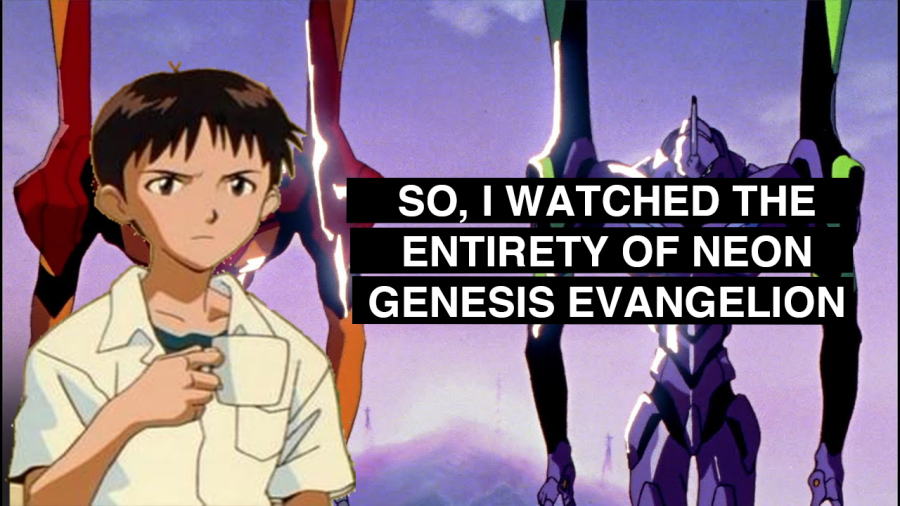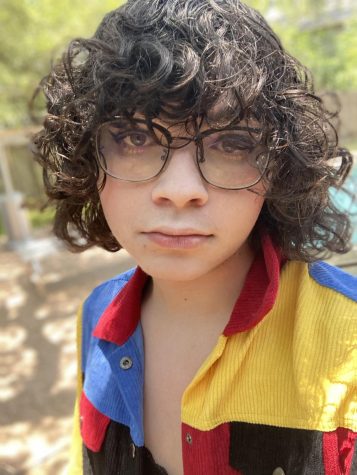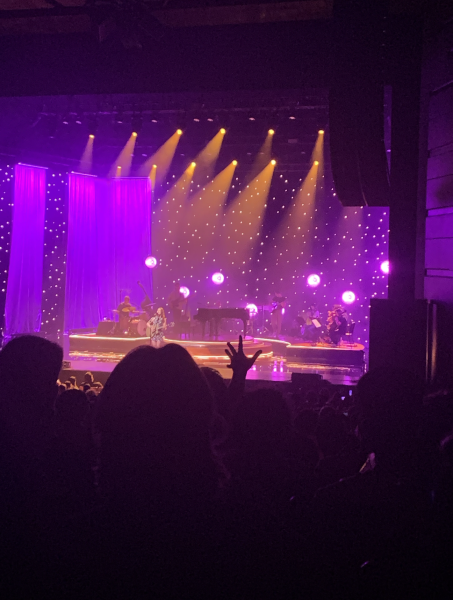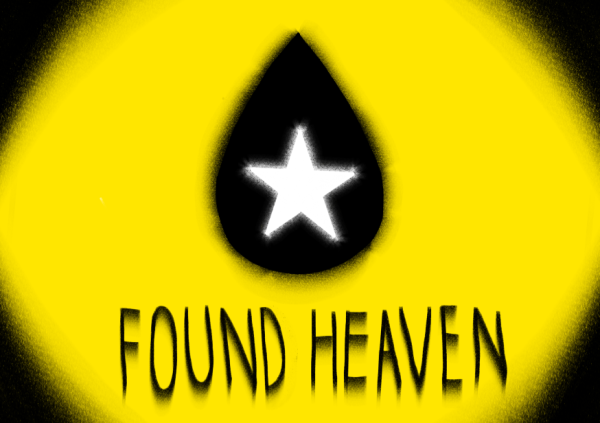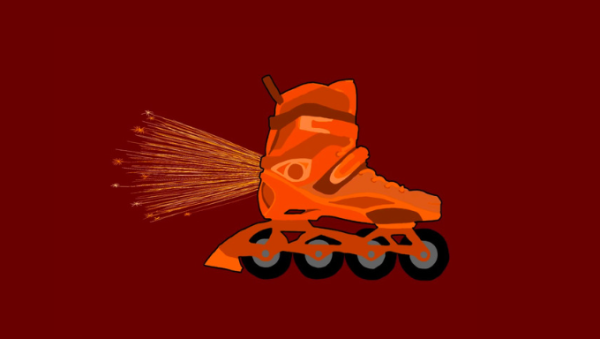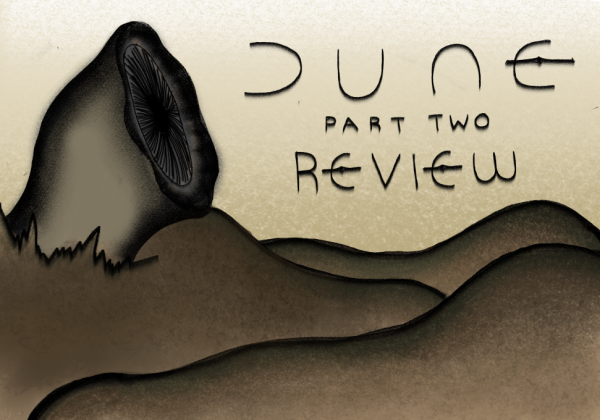So, I Watched The Entirety of ‘Neon Genesis Evangelion’
With a multitude of stories and spin-offs, getting into ‘Neon Genesis Evangelion’ can seem like an uphill battle, but it is ultimately an immensely satisfying journey.
With its initial televisation 26 years ago on October 4th, 1996, Neon Genesis Evangelion has amassed a 26 episode anime series, two movies, an alternative fourteen-volume manga adaptation comprised of 97 chapters, a four-movie reimagining of the original show, a metric ton of merchandise, and a colossal following across the world. With its conclusion finally arriving on March 8th, 2021 in Japan, naturally I watched all of it.
The series was directed by Hideaki Anno, and produced by Studio Gainax. Underneath its mecha genre veil, (an entire genre of anime and manga that often features young teens piloting large mechanical suits), it hides a psychological drama and what I can only describe as a cry for help from Anno, who would often write all of his clinical depression issues he was processing on a piece of paper that would serve as the basis for the series. While it is regarded as the best mecha anime, Neon Genesis Evangelion is a parody of the genre, often focusing on the concepts and thoughts that young teens actually feel at that age, giving the audience a deconstruction of characters we would normally want to see ourselves in. As you would expect, Neon Genesis Evangelion has become one of the most acclaimed anime franchises in, well, ever.
Getting into the series is no easy feat. After all, it’s a series with two vastly different endings, nine-and-a-half hours worth of episodes, a movie chronicling the ending that fans of the series desired, and as I mentioned before, four reimagined movies theorized to be sequels to cap off the entire franchise. It doesn’t make it any better that any of these stories are incredibly dense, with multiple layers of subtext.
Neon Genesis Evangelion: The original 26 episode run from 1995
The original run of Neon Genesis Evangelion may very well be one of the most iconic series of all time. As stated before, the director Hideaki Anno essentially used this story as a cry for help as he processed his clinical depression and used it as a basis for the show. While it is a parody of the mecha genre, it still needs to apply to the story structure it’s lampooning, and of course, detail a story to mask the true meaning of what it’s trying to say.
Following fourteen-year-old Shinji Ikari, a lonely kid abandoned by his father, he is told by the captain of the NERV organization, Misato Katsuragi, that his father needs him to pilot an artificial human called an Evangelion. This is all in an effort to combat an alien menace known as Angels, who could trigger the Third Impact, an apocalyptic event that could eliminate all human life. Why Shinji is chosen is unknown at first, and despite his father Gendo’s need for him, he expresses little interest in Shinji, who fights alongside the brash and hot-headed Asuka Langley-Soryu and the mysterious Rei Ayanami in desperate need of validation from his father. Together, the kids accomplish multiple missions eliminating Angels and learn to work together in the process, all while Gendo and NERV higher-ups such as the scientist Ritsuko Akagi plot and barter with the organization Seele, who are bent on starting the Third Impact for their own reasons.
Along the way, the cast deals with many twists and turns. From Shinji leaving NERV multiple times, to getting merged with his berserk Evangelion, and falling in love with a human Angel known as Kaworu Nagisa, this happens all before the cast uncovers NERV’s shady intentions with the Evangelions, Rei, and the Human Instrumentality Project.
While the majority of the series may convince you that it’s a standard, albeit more mature or even realistic mecha anime, the final few episodes are full of symbolism and subtext that is coated with imagery that can almost explain the entirety of Anno’s mental state when studied. You might be surprised to hear that this isn’t the part of Neon Genesis Evangelion that captured the hearts of fans. In fact, I couldn’t even say that the world this series creates is what amassed this huge following. People love Neon Genesis Evangelion for its ability to remain realistic despite taking place in the at the time, distant future of 2015.
Evangelion is a series that focuses on broken characters, or rather, broken people. Shinji isn’t like other fourteen-year-olds in anime. He goes through realistic mental states that normal teens would, rather than being overly prideful or filled with life like other fourteen-year-olds in this genre. Asuka might seem like the standard hot-headed but ultimately skilled pilot at first, but we later learn that it stems from her past anxiety and trauma faced as a little girl. Gendo isn’t the typical father figure who the protagonist aspires to be like, he’s instead a terrible man who puts people’s lives at stake for something that only matters to him.
Neon Genesis Evangelion, despite its differences to more popular anime, doesn’t shy away from memorable moments. There are so many iconic shots with stellar composition you’d think they were made to be burned into your memory. Some of the most impactful moments are usually held on a still frame for a minute at a time, but it’s Neon Genesis Evangelion that can manage to make these minutes feel like hours holding the audience hostage.
The soundtrack is iconic. Shiro Sagisu’s score dazzled audiences across the globe, and his music underscores everything in Neon Genesis Evangelion very well. Whether it be the cheerful theme of Misato called, well, Misato, the heart-pumping start created by Decisive Battle, or the triumphant feel of the EVA-01 theme that contrasts nicely with the tracks The Beast and The Beast II, these are saved for any moments where Unit-01 goes berserk. There are a few other tracks that I like such as A Step Forward Into Terror, Rei I, and Asuka Strikes, but there is one more track that defies any and all expectations. One of the most well-known openings of all time, Cruel Angel’s Thesis is an angelic track with lyrics sung by Yoko Takahashi that perfectly describe the struggle of all of the characters. The opening in general is incredible, managing to capture the haunting beauty of the series as well as its more intense emotional moments. The editing, with the quick flashes of characters or text denoting terms from the world of Neon Genesis Evangelion such as “Second Impact,” “Adam,” and “Tokyo-3,” that are usually only held on for a few frames at a time has become iconic in its own right. It’s an unforgettable opening that you just can’t skip each episode.
Neon Genesis Evangelion, in tandem with its movie Neon Genesis Evangelion: The End of Evangelion is an ethereal experience that will leave the audience questioning the actions of its main cast, terrified of the world it creates, and shocked at both of its conclusions. Unfortunately, the ending of the original series wasn’t too well-received. Episodes 25 and 26 of the series featured experimental, low-budget animation that acted as more of an end to Shinji’s story rather than the remaining characters such as Asuka, Misato, Ritsuko, and Gendo, among others. The final episodes cover the Human Instrumentality Project, a plan to fuse every human together as one to eliminate conflict and loneliness. Shinji decides that he can choose to accept his issues and make the world a better place for himself, thus ending the TV series. Fans didn’t like it. What happened to Gendo and Seele? Where did Asuka go after Episode 24? What happened to the Third Impact? Well, all of these questions would be answered a year later in the alternate ending, Neon Genesis Evangelion: The End of Evangelion.
Neon Genesis Evangelion: The End of Evangelion, the alternative ending to the series released in 1997
With its controversial ending in 1996, Neon Genesis Evangelion laid dormant for nearly a year. This all changed when Hideaki Anno returned to the director’s chair for two final “episodes” that act as one movie. These episodes, known as Episode 25’ and Episode 26,’ would make up the most iconic Neon Genesis Evangelion film to date, Neon Genesis Evangelion: The End of Evangelion.
Taking place after Episode 24, The End of Evangelion follows Shinji, depressed after killing the first person to ever love him, Kaworu Nagisa. Shinji longs for the return of his only friend left, the injured Asuka Langley-Soryu. When SEELE becomes fed up with NERV, they send in troops to dispatch the main cast. After failing to save Asuka, Shinji is captured in Unit-01 and is used by Rei, who after taking the form of a god after coming into contact with Lilith, initiates the Third Impact. After contemplating his entire life, Shinji chooses to live alone with Asuka in a world he desires, a world where there will be people that reject or dislike Shinji.
While the story may sound less convoluted than the original series, this film is more dense and rich with meaning. A good portion of the Third Impact consists of Shinji’s dream sequences filled with subtext on how Shinji, after being given the power of a god, will recreate the world. Through cinematography, editing, and imagery, these dream sequences explain how Shinji can only find validation in himself by working for others. Additionally, his tendencies to refuse to love himself due to his inability to accept that some people won’t love him illuminate his realization of an ideal world he would like to live in, forming the ultimate resolve to create a world where not everyone loves him, but he can learn to love himself.
Thematically, this ending is similar to the end of the original series, with Shinji finally learning to love himself. Ultimately, the vastly different execution is what made fans cherish this film. There’s a lot of spectacle, and the whole film is remembered for almost the exact opposite reasons compared to Episodes 25 and 26, which were rather infamous for the experimental low-budget animation, constantly rumored to be due to Gainax running out of money or time constraints. The End of Evangelion is remembered for its beautiful animation and imagery, with shots of the world being covered in red as all life is purified, Shinji’s rejection of instrumentality, and the final scene of Shinji and Asuka left stranded while the remains of Rei’s godlike appearance are looming on the horizon still branded into the minds of fans.
The directorial and editing choices are similar to the 26 episode run, and just as stellar and eye-catching, with the soundtrack continuing to amaze. While Cruel Angel’s Thesis defined the show for many, the track that plays over the Third Impact, KOMM, SUSSER TOD, defines this film. With somber lyrics that match everything building up and later unfolding on screen, it forms a good juxtaposition given the happier-sounding tune of the song, making this iconic scene so much more memorable and impactful.
Other than the manga and recap film, Evangelion: Death and Rebirth, this series and film would be the only Neon Genesis Evangelion media for nearly ten years. Despite that long span of time, Neon Genesis Evangelion would be remembered by fans for years, and it would be regarded as one of the most influential stories by the many hearts it captured. While it may be hard to understand the series at times, it still manages to be a memorable, thought-provoking, and psychologically terrifying franchise. While both of its endings are extremely ambiguous, fans would ultimately get their wish with the Rebuild of Evangelion quadrilogy, which concluded in 2021. However, the journey to that happy ending would begin fourteen years earlier in 2007, when Neon Genesis Evangelion fans would return to Tokyo-3 and reunite with Shinji, Rei, and Asuka after ten years of waiting. The next chapter in this franchise will chronicle a retelling of the series and film, beginning with Rebuild of Evangelion 1.11, where we’ll take a look at a story that starts familiar, but takes a drastic turn, ultimately saying goodbye to all of Neon Genesis Evangelion.

